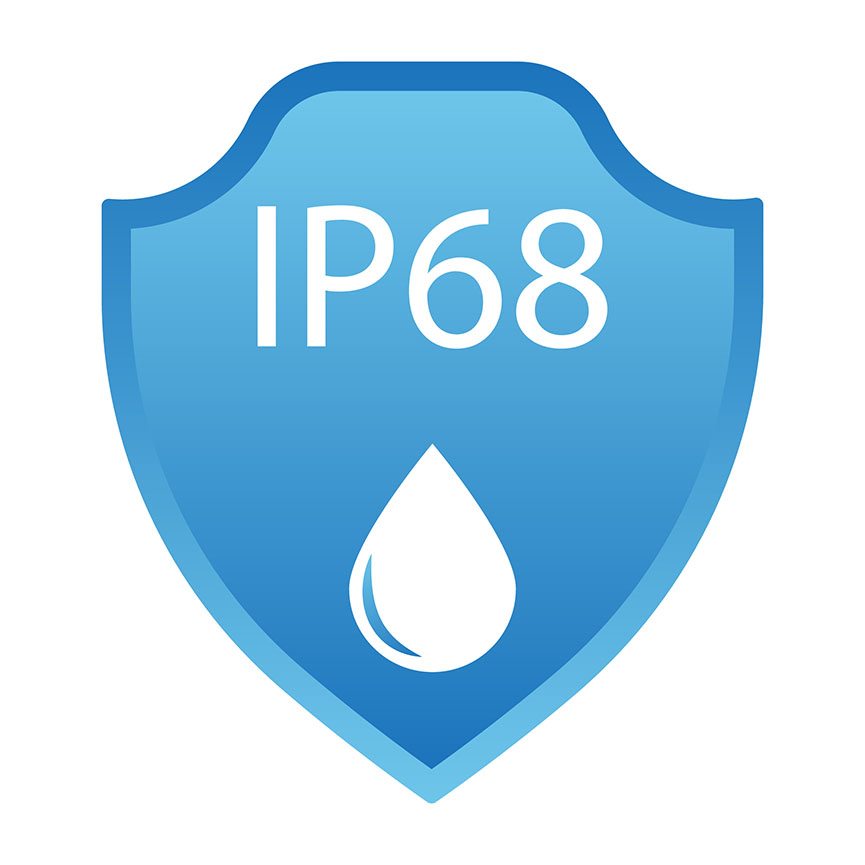- URL
Share
Sometimes you need the best of the best protection for your electrical devices. In challenging conditions with critical assets on the line, it pays to reach for the highest standard of dust and water resistance you can find. When it comes to electrical enclosures, an IP68 enclosure is that standard.
Ingress Protection (IP) ratings are one of the most widely-used ways to rate an electrical enclosure’s water and dust resistance. An IP rating gives you a quick snapshot of the protective qualities you can expect from the enclosure, which is why you’ll find them in use around Europe and the U.S.
Today, we’ll focus on the highest standard IP rating: the IP68 waterproof enclosure rating.

Source: lenapolll/Shutterstock
A Quick Introduction to IP Ratings
The IP rating system is an international standard for rating the ingress protection of electrical enclosures. When we say ingress protection, we mean how well the enclosure keeps things like dirt and water from getting inside. That’s extremely important because dirt and water ingress can present a major hazard to sensitive equipment.
IP ratings offer a standardized way to rank the protective characteristics of an enclosure. The IP standard is based on the IEC 60529 code, an International Electrotechnical Commission standard that dictates the criteria used in IP ratings. It’s used for electrical enclosures throughout both Europe and the U.S. (although you’ll also find the NEMA enclosure ratings used in the U.S.) You’ll also see IP code ratings on smartphones, smartwatches and other electronic gadgets that are intended to be waterproof or water resistant.
Each IP rating is composed of two numbers, with the following significance:
- The first number signifies the enclosure’s level of protection against ingress from solid objects such as dust, dirt and debris.
- The second number signifies the enclosure’s level of protection against the ingress of water (potentially including everything from dripping water to high pressure water jets to total submersion).
Both numbers use an ascending rating scale, with higher numbers signifying a higher degree of protection. Next up: the IP68 rating and how it works according to this system.
What Does an IP68 Rating Mean?
IP68 ratings occupy the very top of the IP rating scale. Both the first digit and second digits are at their maximum level:
- A 6 for total protection against solid ingress.
- An 8 for total protection against water ingress, up to and including complete submersion below one meter and for more than 30 minutes.
When considering IP67 vs. IP68 enclosures, we can see that the IP67 rating and IP68 rating both provide dust-tight protection. Both are also rated for submersion, with the key difference that the IP67 electrical enclosure is only rated for submersion up to one meter and for up to 30 minutes.
Here are two important facts to remember: IP68 ratings can be rated for submersion at different depths. The IP68 protection rating dictates only that an enclosure must be tested to resist a submersion depth greater than one meter, not what depth that has to be. Always check the manufacturer’s water protection specifications for the specific submersion depth that the enclosure is tested for.
Second, remember that the ingress protection tests use fresh water when evaluating an enclosure’s water resistance rating. If your application involves other types of water, such as salt water or chlorinated pool water, note that your enclosures might require additional performance properties.

Source: FOTOGRIN/Shutterstock
Applications for IP68 Enclosures
IP68 enclosures’ high standard of water and dust protection makes them a natural choice for some of the most demanding electrical and electronic applications. These often include:
- Marine equipment
- Equipment in areas potentially subject to flooding
- Water treatment and processing equipment
- Equipment that will be subject to repeated high-pressure hose-downs
With so many different applications for IP68 enclosures, it’s important to remember that the materials and features of an IP68 enclosure make a big difference in determining which model is right for your application.
IP68 Enclosures from Polycase
Whatever your application, Polycase has an IP68 waterproof box that’s a perfect fit. Here are some of our most popular IP68 enclosure options:
- Polycase AN Series: These diecast aluminum enclosures are some of our most rugged and best-looking IP68 enclosure models. Available with welded-on or molded-on flanges for simple mounting, as well as a wide range of enclosure accessories for customized performance.
- Polycase HD Series: Polycarbonate enclosures are incredibly reliable and versatile, which make them ideal IP68 enclosures. Polycase’s HD Series uses impact-resistant polycarbonate to create the ideal outdoor electrical enclosure with submersion-proof performance.
- Polycase ZH Series: The ZH Series is another model of high-performance IP68 electrical boxes from Polycase, this time with a convenient hinged cover ideal for quick but secure access.
Polycase’s IP68 enclosures are built to the strictest standards of quality and durability. In fact, we test all of our enclosures through the independent safety experts at UL so that our customers understand our strong commitment to real-world performance and protection. And when our customers need customized features on their enclosures, we make it easy through our in-house CNC machining and digital printing for IP68 enclosures.

Polycase HD-45F Polycarbonate Enclosure
If you have questions about how to find the right IP rating or NEMA rating for an electrical enclosure, we’re always glad to help. Call Polycase’s enclosure experts at 1-800-248-1233 or contact us online for more information and quotes on customized enclosures.
0 Comment
